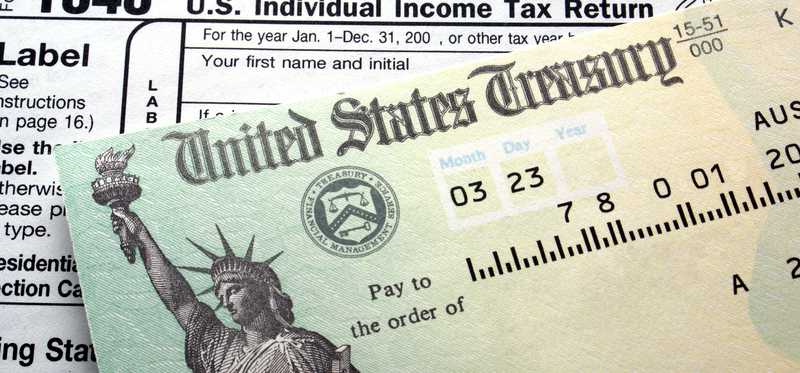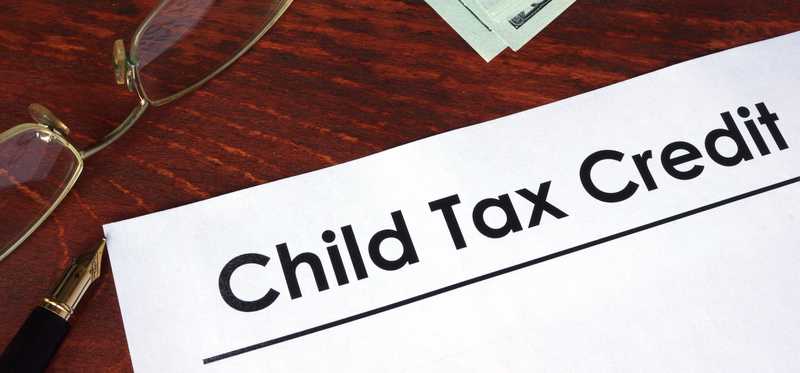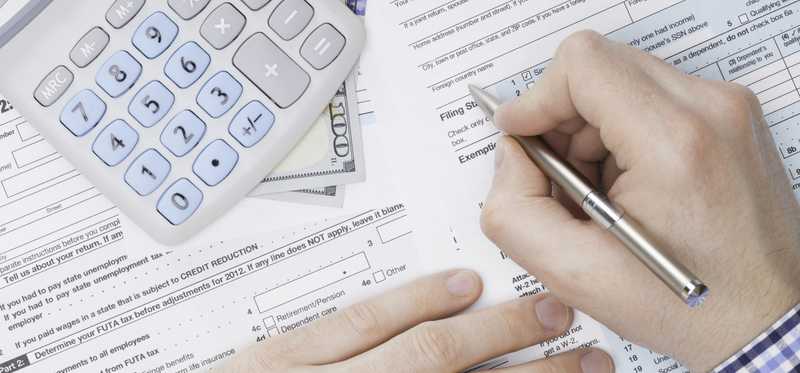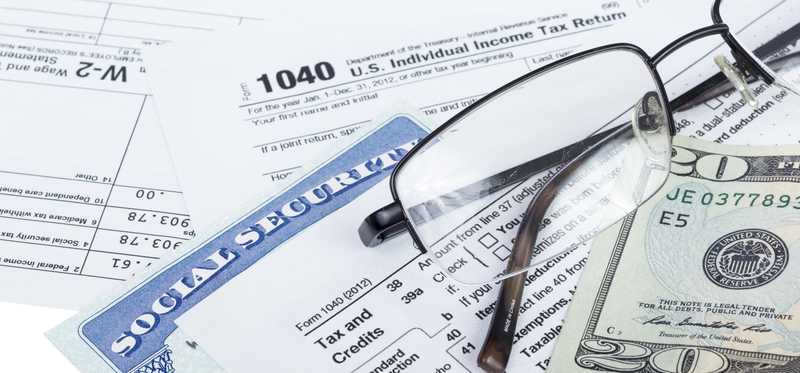10 Tax Mistakes You Should Watch Out For

10 Tax Mistakes You Should Watch Out For
Tax mistakes can cost you
Paying taxes to the IRS isn't fun for anyone -- and no one wants to pay more in taxes than the law requires. Unfortunately, if you make mistakes when you submit your tax return, you could end up with a bigger tax bill than you'd otherwise owe.
The good news is, if you know what mistakes to watch out for you can often avoid costly errors. In particular, you'll definitely want to avoid these 10 common tax mistakes that could cost you a fortune.
Previous
Next

1. Choosing the wrong filing status
When you file your taxes, you have a choice to file as single, head-of-household, married filing jointly, married filing separately, or qualified widow(er). This decision is a really important one because it affects how much income you must earn to move up to a higher tax bracket, what deductions you're eligible for, and what your standard deduction is.
If you choose single when you could choose head-of-household, for example, you move from the 10% bracket to the 12% bracket once you hit $9,525 instead of after earning $13,600. This alone could cost you $81. And this happens at each income point where you move to a higher bracket -- so you'd move to the 22% bracket after earning $38,700 instead of after earning $51,800, and so on.
Plus, the standard deduction for someone who files as single is $12,000 compared to $18,000 if you file as head-of-household. You could deduct $6,000 more income if you were eligible for head-of-household status and filed with this status instead. If this income would've been taxed at the 22% rate, you'd overpay by $1,320 if you chose the wrong filing status.
Use this IRS tool to help you determine your filing status-- and, if you can, always opt for the filing status that keeps your taxes as low as possible.
Previous
Next

2. Failing to maximize your deductions
Not being strategic about deductions you claim is also a major mistake. The biggest error you could make when it comes to your deductions is to itemize when you should claim the standard deduction -- or vice versa.
The standard deduction is a set deduction you can claim based on filing status. For the 2018 tax year, it's $12,000 for singles and married filing separately, $18,000 for head-of-household filers, and $24,000 for married filing jointly. This standard deduction is much higher in 2018 compared with in 2017 because of the Tax Cuts and Jobs Act, which passed in December of 2017.
If you itemized in the past and assume you'll do the same this year, you could make a costly mistake if your itemized deductions don't exceed the standard deduction amount. If you're married and claim $10,000 in itemized deductions, you'd be leaving $14,000 on the table. If you were in the 22% tax bracket, this could cost you $3,080 in extra taxes.
You should add up the value of itemized deductions -- common ones include deductions for mortgage interest; state and local taxes; medical expenses exceeding 7.5% of income; and charitable contributions. If this doesn't exceed the standard deduction, maximize the deductions you're eligible for by claiming the standard deduction instead.
ALSO READ: 5 Tax Deductions That Could Save You Big Bucks in 2019
Previous
Next

3. Not claiming tax credits you’re owed
Tax credits reduce your tax bill on a dollar-for-dollar basis. If you get a $1,400 credit and owed $5,000 in taxes, your credit reduces your tax bill to $3,600. Some credits are even refundable, which means there's a possibility you could get back more money than what you paid into the tax system.
Because tax credits are so incredibly valuable, foregoing even one could come at a big cost. The Child Tax Credit, for example, is worth up to $2,000 per qualifying child in 2018 -- and up to $1,400 of this amount is refundable. The Tax Cuts and Jobs Act significantly expanded the number of people who can claim this credit by raising the income threshold so eligibility doesn't start phasing out until you've earned $200,000 in income or $400,000 if married filing jointly.
If you accidentally forego this credit, you'd be increasing your tax bill by up to $2,000 for each child you could've claimed.
This is just one of many credits you should find out if you're eligible for. Other common credits include the Lifetime Learning Credit, American Opportunity Tax Credit, the Earned Income Tax Credit, and credits for purchasing electric vehicles or making energy-efficient improvements to your home. Be sure to claim every possible credit you can to avoid making a huge, costly error.
Previous
Next

4. Not claiming deductions you’re entitled to
Deductions aren't as valuable as credits because they reduce taxable income instead of directly reducing your tax bill. But they can still save you since you don't pay taxes on the amount you deduct. If you have a $1,000 deduction and are in the 22% tax bracket, you save 22% of the $1,000 you're no longer being taxed on -- so that's a $220 savings.
Since deductions still make a big impact on the amount you owe the IRS, not claiming deductions you're entitled to could cost you. Unfortunately, some people assume if they claim the standard deduction, they can't claim any other deductions at all -- and this simply isn't true.
There are some deductions you can claim even without itemizing, including a deduction for IRA contributions; educational expenditures made by teachers; student loan interest; and health insurance premiums if you're self-employed.
The student loan interest deduction alone is worth up to $2,500 -- assuming you don't make so much money your eligibility for this deduction phases out. Accidentally foregoing this deduction would cost you $550 if you're in the 22% tax bracket.
Make sure you check for all deductions you can claim. And if you do itemize, it's important to keep all your receipts for things like charitable contributions and medical expenses so you can prove you're eligible for the deductions that you listed on your tax return.
ALSO READ: 6 Tax Deductions You Can Claim Even If You Don't Itemize
Previous
Next

5. Not taking advantage of investments that provide tax breaks
Some of the most valuable tax deductions available to you come from investing for your future. These include a deduction for IRA contributions, as well as a deduction for investments made in a health savings account if you have a qualifying high deductible health plan.
For the 2018 tax year, you could deduct up to $5,500 in contributions made to a traditional IRA. If you're 50 or over, you could also deduct an additional $1,000 in catch-up contributions. If you have a qualifying high-deductible health plan, you could deduct contributions of up to $3,450 to an HSA if you have individual coverage or $6,850 if you have family coverage. Those over 55 could put away another $1,000 into their HSA.
The $5,500 in IRA contributions could save you $1,210 if you're in the 22% tax bracket. HSA contributions could save another $759 for single plans or $1,507 for family plans. A $1,000 catch-up contribution to either could save you $220 on your taxes.
HSAs allow you to make withdrawals tax free to cover healthcare costs, or you can withdraw money for any reason and be taxed on withdrawals as ordinary income if you're over 65. IRAs, on the other hand, are intended to provide income in retirement. Investing in either allows you to save on taxes this year while setting up a more secure future -- so not investing is a big tax mistake.
The good news is, you still have time to correct this error because you can make contributions for the 2018 tax year through April 15, 2019.
Previous
Next

6. Not offsetting gains with losses
Making a profit on investments is a great thing -- except when you sell a winning investment and you have to pay taxes on gains. The good news is, you can offset gains with losses. If you know you're going to sell some profitable investments and you also have some duds in your portfolio, you may want to consider selling those losers.
If you had $5,000 in gains you'd have been taxed on and you sell other assets at a $4,000 loss, you can reduce your taxable gains to just $1,000 instead of $5,000. The amount you'd save would depend upon whether you paid short-term or long-term capital gains taxes, as short-term gains are typically taxed as ordinary income while long-term gains are taxed at special capital-gains rates.
If your investment profits would've been taxed as ordinary income and you're in the 22% tax bracket, offsetting $5,000 in gains with $4,000 in losses would save you as much as $880 in taxes. Don't make the mistake of keeping poorly-performing investments in a year when you know you've got lots of gains to offset.
Previous
Next

7. Not paying your taxes on time
The IRS expects you to pay your taxes by the April 15 tax deadline -- even if you apply for an extension of the time you have to file your taxes. If you're tardy with sending your money to Uncle Sam, you'll be penalized for it.
If you fail to pay by the tax deadline, you'll owe a failure to pay penalty equal to .5% of the unpaid tax bill. This penalty applies for each partial month beyond the due date, and it begins accruing on April 16 when the filing deadline is April 15. The IRS also charges interest on your unpaid taxes.
The penalty can be avoided if you file a timely request for an extension to file -- but you'd need to request this extension before the April 15 deadline. The catch is that the penalty is avoided when you request an extension only if you've already paid in at least 90% of the taxes you owe for the 2018 tax year. You then have to pay the remaining 10% by the extended due date, which is in October.
Far too many people think that an extension on filing means they don't have to worry about paying in what they owe by April 15. Don't make this mistake -- get 90% of your tax bill paid by the deadline even if you need to file late so you don't have to pay the IRS-added costs in penalties and interest.
Previous
Next

8. Not filing your taxes on time
If you can't pay your taxes in full by the deadline, you may be tempted just to skip filing or to postpone submitting your returns until a later date. Or you may just get behind on things and assume it's not a big deal if you don't file your returns by the deadline.
Whatever you do, don't make this mistake. The IRS charges a big failure-to-file penalty that's substantially larger than the penalty for failure to pay. If you don't file your return by April 15 (or request an extension until October), penalties for failure-to-file begin accruing the next day. These penalties equal 5% of your unpaid tax bill for each partial month that you're late in filing your tax return.
Paying 5% of your unpaid bill for each part of the month you're late could be very costly -- especially if you're very slow to submit you returns. Whatever you do, don't make this error. Even if you can't pay what you owe, submit you returns by April 15 anyway -- because as you can see, the penalties are much worse for not filing at all.
ALSO READ: Why Your Tax Return Absolutely Must Be on Time -- Even If You Can't Pay on Time
Previous
Next

9. Paying to file tax returns instead of taking advantage of free options
Did you know that if your income is below $66,000, you can file your taxes for free using a number of different software programs. Unfortunately, many taxpayers don't realize that easy, intuitive programs come at no cost. If you pay to file when you could've done so for free, you'll waste whatever the cost of the filing fee was.
You could also end up making the mistake of wasting money paying for tax help if you aren't aware of all the free assistance out there. The Volunteer Income Tax Assistance (VITA) program provides free help with taxes to disabled people, individuals with limited income skills, and taxpayers who make $55,000 or less. Tax Counseling for the Elderly also provides free help to seniors.
Don't pay $100 or more to an accountant or tax prep service when you could get free assistance. The IRS provides info on where you can find no-cost aid to help make filing taxes easier.
Previous
Next

10. Taking a tax refund anticipation loan
If you're owed a tax refund, you're probably anxiously awaiting the day when that refund comes.
Unfortunately, some tax prep services take advantage of your desire to get your money quickly by offering refund anticipation loans. When you take out one of these loans, the tax prep company advances your money almost right away after you've prepared your tax filing with them -- and your refund generally gets sent directly to them from the IRS.
It may seem harmless or even advantageous to take a refund anticipation loan and get your refund in hand ASAP. In reality, however, the fees and costs associated with these loans simply aren't worth paying. You could also get hit with additional surprise expenses if your refund is delayed for whatever reason so it takes longer for the loan to be paid back.
Don't make this mistake. Just say no to a refund anticipation loan. Instead, if you need your refund ASAP, file your taxes as soon as you can, e-file, and claim your refund via direct deposit. Using this approach, you can usually get your refund in as little as 21 days.
Previous
Next

Makes sure you avoid these costly tax mistakes
Now you know some of the key tax mistakes to avoid when you file your 2018 taxes. You can hopefully keep more of your own money in your pocket and give less of it to the IRS.
After all, there's no need to pay more in taxes than the minimum required since you probably have lots of financial goals that you could use your hard-earned cash to accomplish instead.
The Motley Fool has a disclosure policy.
Previous
Next
Invest Smarter with The Motley Fool
Join Over Half a Million Premium Members Receiving…
- New Stock Picks Each Month
- Detailed Analysis of Companies
- Model Portfolios
- Live Streaming During Market Hours
- And Much More
READ MORE
HOW THE MOTLEY FOOL CAN HELP YOU
-
Premium Investing Guidance
Market beating stocks from our award-winning service
-
The Daily Upside Newsletter
Investment news and high-quality insights delivered straight to your inbox
-
Get Started Investing
You can do it. Successful investing in just a few steps
-
Win at Retirement
Secrets and strategies for the post-work life you want.
-
Find a Broker
Find the right brokerage account for you.
-
Listen to our Podcasts
Hear our experts take on stocks, the market, and how to invest.
Premium Investing Services
Invest better with The Motley Fool. Get stock recommendations, portfolio guidance, and more from The Motley Fool's premium services.